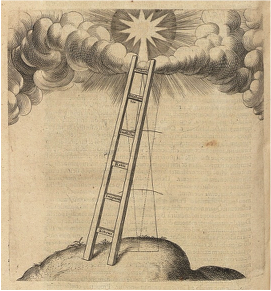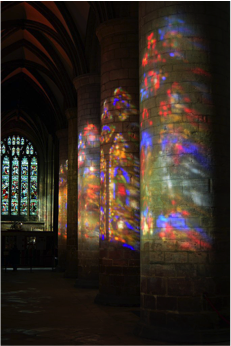Sometimes I wish we could all just declare a temporary moratorium on the term “Integral!!!” What Gebser intended when he chose that name for his emerging fifth structure of consciousness is challenging enough to wrap one’s mind around in the first place. But when his already elusive notion gets repackaged and progressively distorted in a series of popular contemporary misinterpretations, all grandly proclaiming themselves to be “integral,” then we have little choice but to begin by draining the swamp.
So okay, folks… here’s what Gebser’s Integral is NOT:
 It’s not about political or social inclusiveness. It does not equate to “tolerance,” “broadmindedness,” or affirmative action. This is all still synthesis, solidly ensconced within the perspectival modus operandi.
It’s not about political or social inclusiveness. It does not equate to “tolerance,” “broadmindedness,” or affirmative action. This is all still synthesis, solidly ensconced within the perspectival modus operandi.
It is not about “soul work,” self-awareness as we typically understand it, or “integrating the shadow.”
It is not “non-duality,” “a higher state of consciousness,” “self-realization,” or “enlightenment.” In that sense, it has nothing to do with spirituality whatsoever.
It is not the top tier of the evolutionary pyramid (what part of “perspectival” do you still not understand?).
It is not “living in the now.” It does not negate the past and future, but radically re-perceives them.
It does not require the suppression of the mental structure of consciousness, simply the release from its hegemony.
It is not an “it” at all—neither a “state” nor a “stage” of development—but rather, a new integrating capacity that allows all other structures of consciousness to come into a dynamic, harmonious balance.
The integral wild goose chase that’s so muddled much of contemporary spirituality got underway in earnest in the early 1980s with Ken Wilber’s ambitious effort to “complete” Gebser’s roadmap. In Gebser, there are five structures of consciousness, five only. In his groundbreaking 1981 work Up from Eden, Wilber, at the time a fervent Buddhist, added a “third tier” to Gebser’s map consisting of attained states borrowed mostly from the Asian traditions and culminating in “Nondual.” His nomenclature has substantially morphed over the years, but his staunch identification of the top rung on this evolutionary ladder with “the ever-present Nondual awareness” (Integral Spirituality, pg. 74) has held firm—this rung, in turn, accessed through a basically Buddhist transformational technology grounded in the Four Noble truths, the renunciation of suffering, the dissolution of the mirage of ego, and the attainment of a permanent “Nondual” enlightenment.
Apart from the word “Nondual” word itself—which is foreign to Gebser’s vocabulary—Wilber’s original description of “the ever-present awareness” is but a hair’s breadth away from Gebser’s “ever present origin.” But as Wilber’s original teaching got reified in the hands of some of his influential popularizing followers, this hair’s breadth widened to a river, and the “nondual” piece found a comfortable new berth in the Christian contemplative reawakening now firmly entwined with quasi-Buddhist platitudes of “letting go of the mind,” “living in the now,” and “everything belongs.” It’s all part of that amiable “Nondual lite” mélange that grew up in the 1990s (been there, done that!) and has so profoundly set its stamp on an original and much more subtle understanding of the Christian contemplative vision.
 In any case, this “nouveau-Integral” map” is radically incompatible with Gebser’s subtle and rigorously Western mode of thinking. What he envisions as “integral” is by his own testimony “not an expansion of consciousness, but an intensification of consciousness.” And the quintessential expression of this intensification does not lie in the “laying down” of ego, the cancellation of particularity, or the collapse of past and future into an amorphous present, but in the Originary Presence shining through the whole intricate artifice like light pouring through a stained glass window. To be sure, Gebser has little use for the “hypertrophied ego,” but the Integral selfhood he envisions is still very much a personal selfhood—only one operating at an immensely higher candlepower.
In any case, this “nouveau-Integral” map” is radically incompatible with Gebser’s subtle and rigorously Western mode of thinking. What he envisions as “integral” is by his own testimony “not an expansion of consciousness, but an intensification of consciousness.” And the quintessential expression of this intensification does not lie in the “laying down” of ego, the cancellation of particularity, or the collapse of past and future into an amorphous present, but in the Originary Presence shining through the whole intricate artifice like light pouring through a stained glass window. To be sure, Gebser has little use for the “hypertrophied ego,” but the Integral selfhood he envisions is still very much a personal selfhood—only one operating at an immensely higher candlepower.
Gebser betrays his Western roots as well in his adamant insistence that the emergence of EVERY new structure of consciousness comes at the price of personal suffering. “Pain is the ground of motion,” Jacob Boehme once famously quipped, and Gebser proves himself to be a loyal son of this cardinal Western orientation point. True, there is “stupid suffering”— useless and unconscious— which does little more than add to the cosmic pain body. But suffering in and of itself is the precondition for all evolutionary emergence, and the enlightened spiritual stance is not to eliminate it, but to increase one’s capacity to bear it consciously. Gebser speaks to this with poignant brevity when he writes in The Ever Present Origin: “The demand of consciousness emergence [is] to be able to endure suffering (pg. 71).”
In one of his most revealing passages, he further expands:
The identical deed that prompts Christ to accept suffering via his conscious ego leads, in Buddhism, to the negation of suffering and to the dissolution of the ego, which, when transformed, returns to the original state of immaterial Nirvana. In Buddhism the suspension of sorrow and the Ego is held in esteem; and this suspension of sorrow and suffering is realized by turning away from the world. In Christianity, the goal is to accept the ego, and the acceptance of sorrow and suffering is to be achieved by loving the world. Thus, the perilous and difficult path along which the West must proceed is here prefigured. (pg .90)
Without wanting to adjudicate in this perennial metaphysical dispute, I would say at very least that it defines and frames Gebser’s quintessentially Western approach to the question of conscious integration.
Whatever else Integral is for Gebser, it is far more closely mirrored in Teilhard’s “paroxysm of harmonized complexity” (The Human Phenomenon, pg. 186) than in any attempt to corral it within a monadic Oneness, whether temporally —“the eternal present,” spatially—the top rung on the evolutionary ladder, or metaphysically—Nonduality. Neither the gestalt nor the complexity of Gebser’s thinking allow for its easy recapturing in popularized Westernized Asian models, and all contemporary approaches stepping off from this starting point will likely wind up marching around in circles.
A Note from Wisdom Waypoints:
We appreciate your comments, please share your reflections in the Comments section below.
Jeremy Johnson’s book: Seeing Through the World: Jean Gebser and Integral Consciousness, is available from the publisher, here at Revelore Press. Jean Gebser’s The Ever Present Origin is available from the publisher, here at Ohio University Press.
Images from the top: Robert Fludd image from the Utriusque Cosmi, Vol 1, 1617, thanks to Public Domain Review, image courtesy of Deutsche Fotothek; Reflections at Gloucester Cathedral, courtesy of Vincemc at Wikimedia Commons; Complexity Science Image courtesy of the Center for Complexity Science, Imperial College of London.


My understanding of “to endure suffering” is that we have no choice but to suffer — we suffer life, we can’t not suffer it, and the only choice we have is in how we suffer it. In that sense we endure suffering.
I’ve been following these posts and recently read Johnson’s Seeing Through the World with much pleasure, but this certainly is the most prescient and useful of my reading: I can easily now see the difference between the Western and Asian approach. I appreciate that Cynthia is not “adjudicating” on this point, but raising it for us to contemplate. I think around the world we are enamored with the Buddhist path, as Cynthia points out in the memes adopted by modern culture, but then we apply or appropriate lessons learned in one cultural setting to another without deep reflection. The points raised here about “conscious suffering,” gathering past-present-future into one, and working with the ego’s particularity seems resonant with my experience and those of my students, despite having lived in Asia for 30 years. This is not to denigrate that tradition in the least, but rather to give them their due place at the table. What comes to mind is one of the most familiar images in Chinese iconography – two dragons playfully dancing around a central jade ball. Let’s pull up a chair and enjoy the two traditions speaking playfully to each other of their winnowed wisdom.
Thank you Cynthia. I confess, I haven’t been diligent in reading this series, however, this entry caught my eye. Just last night I wrote a reflection that included a comment on this subject. I found myself speculating that when we encounter Eastern philosophies or Spiritual ideas and attempt to view them through a Western Lens, we find ourselves with a distorted view. After spending two weeks in India, I came home with the impression that the philosophies I heard and read had a cultural aspect. I visited India (specifically visiting two ashrams with Mathew Wright) intentionally keeping an open mind so I could have an experience as free from pre-conceived ideas as possible. I came home a different person and I’m still unpacking what I experienced so that I can articulate it clearly. You’ve inspired me to take the time to go back and digest all eight blogs and whatever comes next. My processing, digesting and integrating capacities are much slower than your writing capacities. Once I get it and confirm it in my experience, though, it’s solid. Thank you again for this. It’s extremely helpful for this wisdom practitioner, post holder and sharer.